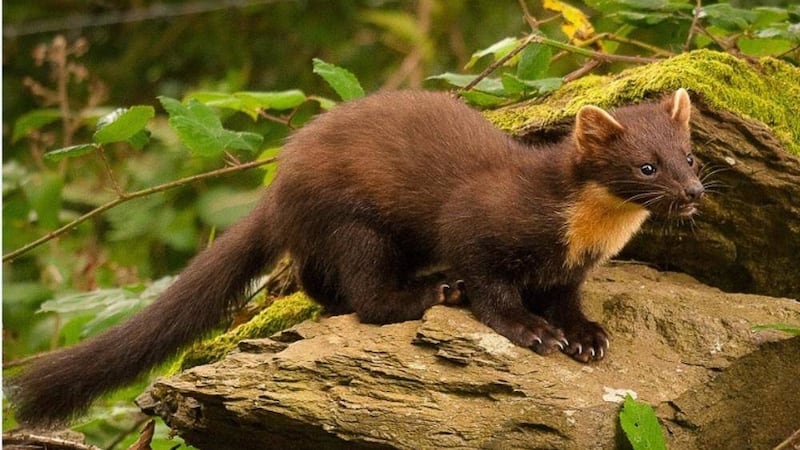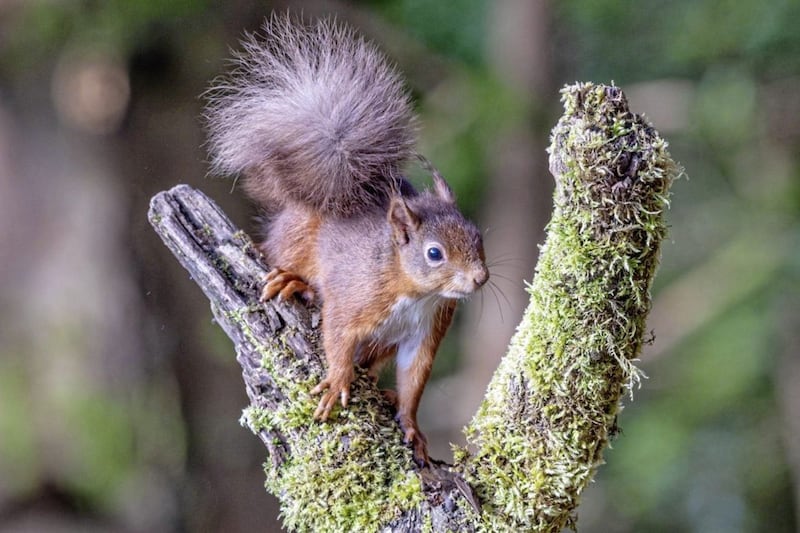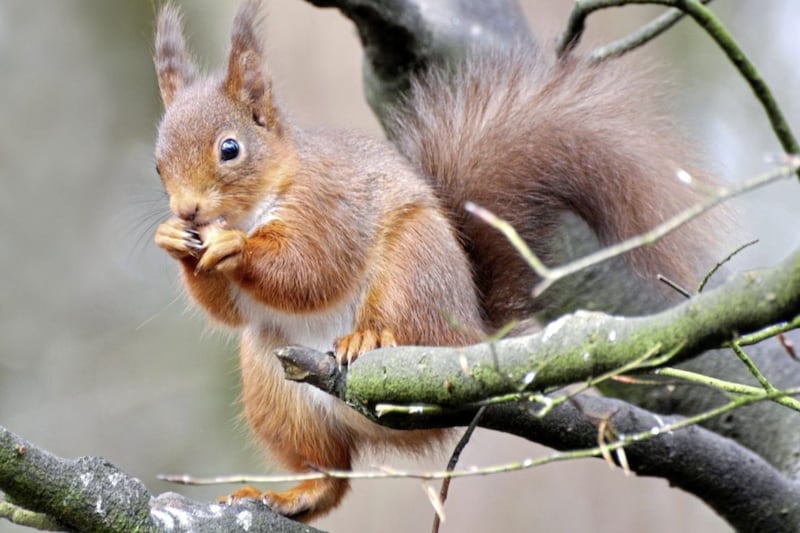BELFAST scientists are warning that a proactive approach is needed at government level to help humans and pine martens co-exist and to diminish the threat of drastic measures against this once elusive creature.
Researchers at Queen’s University Belfast, working with a team of citizen scientists, have discovered that the cat-sized carnivore which had been rarely sighted in the past is “more widespread” in Northern Ireland than previously believed.
Dr Dave Tosh of QUB’s Quercus and some 70 volunteers are now revealing that the pine marten is present in forests in every single county across the north, rather than just the region’s western counties.
The research, which is the first of its kind for the north, made use of remote cameras (known as camera traps or trail cams) to survey over 250 forests for pine martens and squirrels. The innovative technique meant researchers were able to gather comprehensive data quickly and effectively.
Their work was funded by The Challenge Fund, which is based on the plastic bag levy and administered by Northern Ireland Environment Link (NIEL).
The pine marten,– Martes Martes in Latin and Cat Crainn in Irish – is a mustelid, a fur-covered carnivorous mammal, which makes it a relative of the badger, stoat, weasel, mink and otter.
It is also arboreal, meaning that its preferred choice of home is a hole or cavity in a tree, keeping it out of the way of larger predators like foxes.
Pine martens are a native species, with the earliest remains found so far dating back to 2,780 years ago.
Once widespread in Ireland, numbers plummeted because of persecution in the 19th and early 20th centuries when they were trapped for their fur, killed by gamekeepers and suffered loss of habitat as forests were cut down.
However, they have been making a comeback and are often credited with the decline of the grey squirrel, which is an invasive species, in parts of the UK and Ireland.
Dave’s massive and dedicated team found that as well as being in Fermanagh and west Tyrone, pine martens were spreading to places like south Armagh from southern counties like Louth, Monaghan and Cavan.
It seems though that the resurrection of the pine marten is a double-edged sword. On the plus side, we do not want to see native species becoming extinct and they may be helping to save the red squirrel by getting rid of its bigger American grey cousin.
Pine martens feed on rodents, birds, frogs, rabbits, and sometimes fish in coastal areas. They are known to kill and eat squirrels in other countries and while they have not been observed doing so on this island many believe their re-emergence is linked to the decline of the grey squirrel.
A separate Quercus study is currently investigating whether the grey squirrel is capable of recognising and avoiding the scent of the pine marten, causing them to leave areas where the latter is present, making way for red squirrels to re-emerge.
However, Dave is concerned that growing numbers of pine marten will lead to increased contact with people, particularly as their favoured habitat, coniferous or mixed woodland, is not widespread in the north.
“There aren’t many natural places for them to den in as, at just six per cent, Northern Ireland has the lowest tree cover in Europe,” he says, adding that they have been known to make dens in people’s roof spaces, causing noise and mess.
Poultry owners also fear that the animals pose a threat to their eggs and flocks: Irish poultry internet forums are full of stories about the loss of birds as well advice on the illegal – I’ll write that again – illegal, disposal of pine martens.
They are protected by law on both sides of the border, meaning that trapping and/or killing them without a licence is illegal. You are also breaking the law if you destroy or disturb their nest.
Dave now wants the authorities to act fast to prevent pine martens being killed but also to protect people from breaking the law by giving them the support they need to tackle any pine marten-related challenges.
He says the Republic’s National Parks and Wildlife Service has already published useful guidelines for the public on how to protect flocks and game against pine martens.
More information on the NPWS literature is available on by visiting
Npws.ie and searching for 'pine marten'.
The NPWs tells me that any member of the public that contacts their Dublin HQ about a pine marten issue is referred on to a local conservation ranger for practical support.
Dave says that the “best folk” for people north of the border to contact is the Biodiversity Unit within the Northern Ireland Environment Agency (NIEA) on 028 9056 9605.
Meanwhile, he is full of praise for the band of nature enthusiasts who helped him on his study, saying: “We simply could not have done a project of this scale in such a short period of time without the help of the citizen scientists.
"In each forest the volunteers visited, they attached a camera to a tree opposite a squirrel feeder. They would then return a week later to see what had visited the feeder and share the results with me.
“Scientists usually survey for pine marten by looking for their faeces (or scats as they are known) along forest tracks and roads and due to confusion with fox and stoat faeces, genetic testing is required to confirm the source. The use of remote cameras bypasses the need for these complicated and more expensive techniques and can be done with a minimum of training.”
Dave now believes that the Quercus research will provide an opportunity to study the relationship between the pine marten and the red and grey squirrels.
“There is a new enthusiasm for understanding this relationship as recent research suggests the pine marten may have a role to play in the conservation of the red squirrel.”








